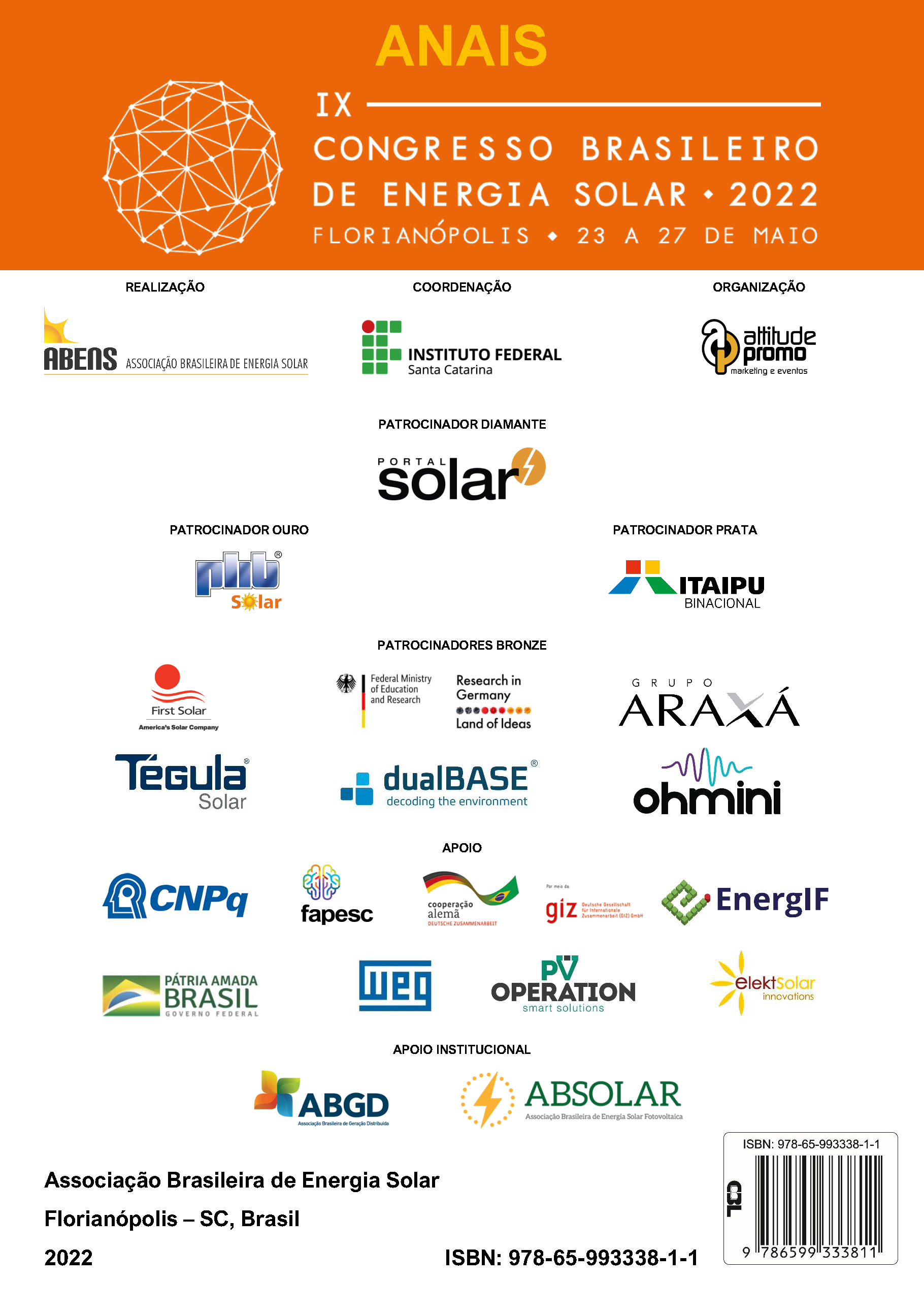COMPARATIVE ANALYSIS OF PHOTOVOLTAIC SYSTEMS CONNECTED TO THE NETWORK INSTALLED IN CURITIBA WITH DIFFERENT TOPOLOGIES
DOI:
https://doi.org/10.59627/cbens.2022.1232Keywords:
Photovoltaic Solar Energy, Merit Indices, Distributed GenerationAbstract
The water crisis aggravated in 2020 evidenced the dependence of the National Interconnected System (SIN) on high-cost energy generation sources to supply the demand for electricity in times of water scarcity. The main factors for the increase in electricity costs were the dispatch of Thermal Generation and import of Electricity from Argentina and Uruguay, according to the Electric Energy Trading Chamber (CCEE). This scenario promoted an exponential growth of the portion of the Brazilian energy matrix composed of Photovoltaic Generation, both for the emergence of Solar farms, as well as commercial or residential systems. This paper presents a comparative analysis between Network-Connected Photovoltaic Systems (SFVCR) installed in the city of Curitiba, in different locations, with different topologies, with inverters and modules of different characteristics, with different orientations and inclinations, according to the availability of roof areas in each location. The initial projections of annual generation were analyzed and the result obtained over the course of a year was verified, seeking the improvement of the technique used by designers and integrators of photovoltaic systems, to obtain a more assertive estimate possible, aiming at the sizing of the systems to obtain the best result for technical and economic viability. The Merit Indexes, Capacity Factor and Performance Ratio of seven photovoltaic systems installed were analyzed, with the objective of proving the studies already carried out on the potential of power generation in Curitiba, from the analysis of the data of electricity generation of these systems and the irradiation data obtained from the National Institute of Meteorology (INMET). The choice of inverter and the installation mode of photovoltaic panels are determining factors to maximize the performance of the photovoltaic system (TONIN, 2017).
Downloads
References
AGÊNCIA NACIONAL DE ENERGIA ELÉTRICA. Resolução Normativa 482 – ANEEL
http://www.aneel.gov.br/cedoc/bren2012482.pdf.
GERASOL. Sistemas Conectados à rede. http://www.gerasolbr.com.br/energia-solar.html, 2016.
NREL. Q3/Q4 2018 Solar Industry Update: NREL/PR-6A20-73234, 2019.
Disponível em: <https://www.nrel.gov/docs/fy19osti/73234.pdf>. Acesso em: 27 fev. 2019.
PINHO, João Tavares. GALDINO, Marco Antonio. Manual de Engenharia para Sistemas Fotovoltaicos. Rio de Janeiro, 2014. 530 p. RODIGUES, M. Uma Visão Topológica Sobre Sistemas Fotovoltaicos Monofásicos Conectados à Rede de Energia Elétrica – LABSEL UFJF, Minas Gerais.
URBANETZ JUNIOR, Jair. Sistemas Fotovoltaicos Conectados a Redes de Distribuição Urbanas: sua influência na qualidade da energia elétrica e análise dos parâmetros que possam afetar a conectividade. 2010. 189 p. Tese de Doutorado em Engenharia Civil – UFSC, Florianópolis – SC, 2010.
VILLALVA, M.; GRADELLA, M.; GAZOLI, J.; Energia Solar Fotovoltaica Conceitos e Aplicações. São Paulo : Érica, 2012. http://www.osetoreletrico.com.br/web/documentos/fasciculos/Ed81_fasc_energias_renovaveis_cap9.pdf


